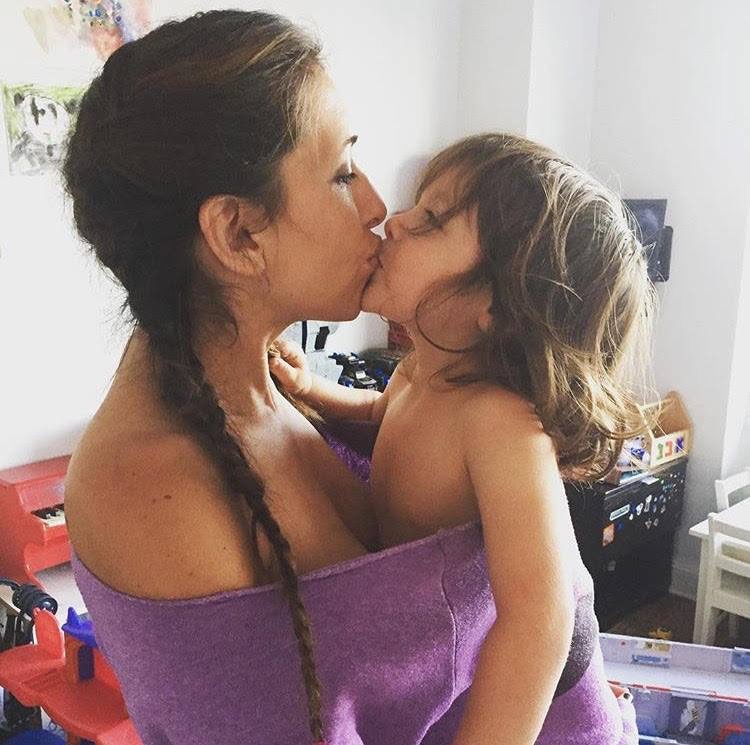How much can parents really impact their kids? Isn’t a lot of who they are genetic? The debate between nature and nurture is still raging. Studies of twins reared separately suggest that many behaviors we might have attributed to environment may be innate. But does that mean we’re off the hook as parents?
It turns out that about half of who we are can be traced to our genes. The other half, scientists say, can be attributed to our environment. Environment, of course, includes the world of peers and school, so some of who our kids become is attributable to the outside world. But the most important traits – the ability to give and receive love, the ability to maintain inner happiness regardless of the slings and arrows of fortune – are determined by a child’s earliest relationships.

“After decades of clinical experience and familiarizing ourselves with the relevant research, we have concluded that the most important aspect of personality – the stability or instability of a person’s inner happiness – is entirely determined by the nurture a child receives.”
-Pieper and Pieper, Smart Love
All children are born with a distinct temperament. As parents we can’t control this raw material, but we can try to give our children the environment that will best help them to make the most of their potential.
Let’s take, for instance, the trait of shyness, which geneticists believe is greatly influenced by our genes. Shy kids are at a disadvantage in our outgoing, busy culture, because they’re highly sensitive to stimuli and have a harder time relaxing and connecting with others. But shy baby chimps given to extremely nurturing mothers became leaders in their group, while their shy siblings raised by average mothers remain shy and fearful throughout life. The responsive mothering helps the shy chimps learn to calm themselves and manage their reactions, while their heightened sensitivity makes them more responsive to the needs of other chimps and better at negotiating group situations. What a perfect example for parents of the interaction of genetics and environment.
So we start with what we are given: temperament. Stella Chess and Alexander Thomas’s landmark study on temperament identified nine apparently innate traits in babies: activity level, regularity, approach or withdrawal, adaptability, responsiveness, intensity of reaction, positivity or negativity, distractibility, and attention span or persistence.
Given that Chess didn’t observe the babies until they were already some months old, there has been debate as to whether these traits might already have been influenced by environment, but most developmental psychologists take Chess’s conclusions at face value.
Infants can be rated somewhere on a continuum of high to low on each of these traits, and it is thought that they are unlikely to change throughout their lives. What can change is the way the trait manifests, depending on how the person learns to modulate it.
Everyone is born with strengths and weaknesses. Learning to manage one’s weaknesses so as to make the most of one’s strengths is a major task of maturation, and one that remains challenging to many adults. Each child is born with unique gifts, and our challenge as parents is to help our children understand, appreciate, and modulate both their strengths and weaknesses so that they can develop into healthy, happy, successful adults.
One insight that can help parents to accept their child’s “weaknesses” is the realization that almost all weaknesses can be understood as the flip side of that person’s strengths.
For instance, a child might be incredibly stubborn, arguing with her parents to get what she wants until she simply wears them down. While that trait might be hard to live with and might indeed alienate others at times, from friends to teachers to employers, the flip side of the trait is dogged persistence. This is the kind of persistence that will serve this child well if she grows up to be a detective, a scientist, a novelist — indeed, almost any profession would be served by such persistence.
The parents of this child can assist her by helping her recognize that while this trait is an asset, it can also drive others crazy and make them angry at her. She needs to learn to modulate it and use it, rather than letting it control her. Helping children to know themselves well and to manage themselves to best meet their overall goals is one of the most helpful gifts any parent can give a child.
Here’s how:
1. Know your child.
Pay attention to what you love about him, and also to what drives you crazy. Those “negatives” may come out only with you — parents have special privileges, after all — but they probably emerge in the rest of his life too.
2. Accept your child’s weaknesses.
Everyone has them. Think about those “negatives” in the context of our hypothesis that they may be the flip side of a strength. If he has trouble controlling his anger when his brother disrespects him, is he an equally passionate fighter against other injustices he perceives? Is his dawdling a sign of immense imagination — like Calvin of Calvin and Hobbes, is he secretly Spaceman Spiff?
3. Help your child to understand her strengths as well as the areas she needs to learn to manage.
Talk with your child about what you see. Be sure to frame it positively, starting with how you’ve noticed this wonderful thing about her. Be honest about how the flip side of this trait is a challenge to live with. Point out how that ends up being a problem for her, too, when she impacts negatively on other people.
Ask her if she has ideas about how to manage it so she gets the benefits but not the drawbacks. If you or her other parent has the same trait, point that out and talk about learning to manage it. Make your story positive and hopeful. That will help her to feel less alone and more optimistic about handling what may seem like a daunting challenge.
One caveat to this: Your goal is to help her notice something about herself, and to learn to manage it, not to label her in such a way that she feels locked in to your expectations. Be sure to make it clear that everyone changes, and that as we grow up, it gets easier to manage ourselves.
4. Own your reactions.
Sometimes we think it’s self-evident that our child’s personality is difficult. But what bothers one parent might not bother another. A high energy kid might might fit right in with some families but exhaust others. Frame your requests as “I” statements rather than criticism:
“I see you feel like jumping around right now. I’m tired and a little cranky, and the noise is too much for me. Do you want to go outside and play or down in the basement to jump on the old mattress?”
5. Look in the mirror.
Often what drives us crazy about our child is something we can’t acknowledge about ourselves. If we think our child is obstinate, we might want to look at who he’s pushing up against. It takes two to have a power struggle. If we think she’s a “drama queen,” is that because we had to “cut off” our own big feelings when our parents told us to stop over-reacting? Intentionally softening our reaction to our child often has the effect of uncovering and healing our own triggers.
6. Contextualize
Children need to know that they don’t make mistakes because they are bad, but because they are human, and, in many cases, because they are children. This is especially important when she slips and feels bad about her progress.
“I know you didn’t mean to yell at your friend when you got upset. You’ve been working hard not to lose your temper. I had a hard time managing my temper when I was eight too. It will get easier as you get older.”
7. Be patient.
You may be amazed at the change after you begin talking about temperament, and you may not. Sometimes self awareness and clear intention is enough to create remarkable changes. Sometimes you need to keep talking, keep reminding, keep exploring ways to manage whatever challenges you about his behavior. And what works will evolve as he does.
But once you’ve found a way to help your child see his whole self positively, he’ll be on the road to learning how to manage even the most challenging character traits. Even more important, he’ll feel cherished for who he is. And that’s the unconditional love every child needs to thrive. Celebrate every step in the right direction!
“Try to see your child as a seed that came in a packet without a label. Your job is to provide the right environment and nutrients and to pull the weeds. You can’t decide what kind of flower you’ll get or in which season it will bloom.”
-Anonymous
Recommended Resources:
Dr. Laura Markham is the author of Peaceful Parent, Happy Siblings: How to Stop the Fighting and Raise Friends for Life and Peaceful Parent, Happy Kids: How to Stop Yelling and Start Connecting and
more, – you can visit her at ahaparenting.com.
Purchase her books here;
Image and article reprinted with permission by the author.



